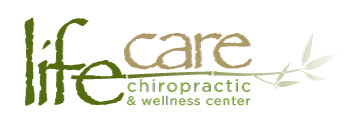
Dry Needling for Pain Relief: A New Tool for Your Pain Toolkit
Believing that needles can actually REDUCE one’s pain may sound far-fetched to some of you.
We don’t typically think of something we associate with getting shots as something that can reduce or remove our pain. However, dry needling is helping a lot of pain sufferers feel better – and we now offer this pain relief technique at Life Care!
With the addition of our new doctor of chiropractic, Dr. Betel Aklilu, we now have a practitioner experienced in dry needling. We sat down with Dr. A to get answers to the types of questions you might have about dry needling so we can educate our patients on the technique.
Dry needling explained
For starters, the needles are dry. The reason the needles are described as “dry” is that they do not involve injecting any type of medication into the skin. Thin, solid needles are inserted into the skin at the myofascial trigger points of muscles. Specifically, the needles penetrate the taut band of skeletal muscle located within a larger muscle group. The purpose of the needle placement is to create a relaxation response and increase range of motion within the muscle group.
Dr. A got interested in dry needling because she saw it as a simple, non-invasive yet effect way to improve pain.
“I had seen other providers use it to enhance healing of their patients, and I wanted to do the same. I have always been passionate about finding holistic, safe, effective treatments for treating pain. Dry needling is widespread in Europe and other parts of the world but it is still fairly underutilized in the United States. Dry needling therapy treats soft tissue (muscle, tendon, ligament) dysfunction and has proven remarkably effective in treating a vast number of myofascial syndromes,” shared Dr. A.
The needles used to perform dry needling are similar to acupuncture needles – but be clear, dry needling is very different than acupuncture. Acupuncturists insert needles to release endorphins and affect the nervous system, aligning a person’s “chi” or healing energy. Dry needling is really about muscles – and relieving the tightness and pain with needle placement.
“This therapy is based on palpatory findings and an understanding of anatomy, physiology, and neurology. Thus, it is a separate system of healing unrelated to the laws and philosophy of acupuncture,” said Dr. A.
Good candidates for dry needling
Certain pain conditions respond better to dry needling than others. Practitioners believe dry needling can be effective for the following conditions:
- Neck, back and shoulder pain (i.e., whiplash, frozen shoulder)
- Arm pain, such as tennis elbow
- Migraine and tension headaches
- Hip, buttock and leg pain (i.e., sciatica)
- Muscle spasms
Dry needle therapy cannot be done on areas of open wounds or over a pacemaker. It is not recommended during high-risk pregnancies or for patients with needle phobias or genetic bleeding disorders.
Reasons to try dry needling
For starters, it has proven to decrease pain in folks who are candidates for the technique. Dr. A believes in trying it as a part of a patient’s overall treatment plan.
“When dry needle therapy is coupled with chiropractic adjustments, patients feel relief faster and their adjustments typically hold longer because we have impacted both the musculoskeletal and nervous system,” she said.
By releasing the tightness in muscles, patients can move more freely and experience increased mobility. Dr. A, like Dr. Sharman, is always in favor of getting patients back into the activities they love as quickly as possible. Dry needling can assist in speeding up this process.
Another reason to try dry needling is that the side effects are minimal and very short term. Any achiness or fatigue from treatment only lasts about 24 hours.
As well, patients become less reliant on medication for pain control. For people looking for more natural pain solutions, dry needling should be a part of their toolkit.
Finally, dry needling is very cost-effective when you compare it to surgery or long-term medication use.
Dr. A generally asks patients to have dry needling done two to five times in span of two weeks. However, this varies depending on the patient’s condition, and Dr. A cautions that relief is not always immediate. Like any therapy, it can take time to bring about the pain relief a patient is seeking.
Is dry needling for you?
It may be. At Life Care, we’ll start with getting an accurate diagnosis for your pain condition – and see if dry needling is recommended as a part of your PAIN TOOLKIT. It won’t be for everyone, but we are thrilled that, thanks to Dr. A, we now have this as an option in our holistic approach to healing. Be sure to reach out if you want to learn more – or schedule a diagnostic appointment with Dr. A.
Dr. Sharman

